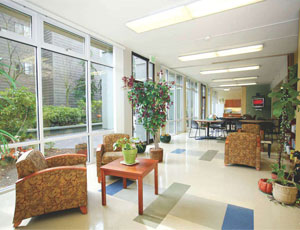Spiking oil prices, soaring utility costs and worries about global warming have sprung energy efficiency from obscurity onto the list of new directions in design and construction.

High-end, expensive green projects have always captured the attention of the nation. But as the nation focuses more on maximizing resources and minimizing waste, and the costs associated with “building green” become more affordable, designing and building structures that save energy and the environment have become the new frontier.
Thanks in part to the national recession and frozen credit markets that have stymied new commercial construction, architects and builders are finding more owners and investors interested in renovating existing buildings. These owners want to change their use, make their buildings more energy efficient and give them new life.
That contrasts with the older practice of demolishing an existing building, replacing it with a new one and dumping tons of construction debris go into a landfill.
In Washington State, new commercial buildings need to be a lot more energy efficient – 70% more efficient by 2030 – as a result of new laws passed in 2009.
By making this commitment, Washington became the first state to adopt goals set forth by Architecture 2030, a nonprofit and independent organization headquartered in Santa Fe, N.M., that was established in response to the global-warming crisis. The group believes the global building sector can become a central part of the solution to global warming by making new and existing buildings more energy efficient.
Industry watchers say existing buildings will benefit from the new laws. One requirement under the state’s new law requires utilities to collect energy-consumption data on commercial buildings and supply the information to buyers or tenants on or before 2012. As low utility prices gain importance for potential tenants or buyers, savvy building owners want to make sure their buildings are as energy efficient as possible.
Commercial buildings won’t be the only category reaping the benefits of energy-efficient upgrades. Schools and public housing projects are becoming more energy efficient as evidenced by the work underway in Seattle by Seattle Public Schools and the Seattle Housing Authority, says Donald King, chief executive officer and founder of DKA Architecture in Seattle. Each has renovations under way that include weatherization and energy-efficiency improvements, which in some buildings are designed to cut energy bills by 35% or more.
Landing Stimulus Money
The Seattle Housing Authority conducted energy and water consumption audits on many of the 22 low-income high-rises the agency is renovating as part of its $50-million-plus HomeWorks Program. SHA is replacing roofs, windows, mechanical and plumbing systems to extending the life of the aging buildings, many of which were built in the 1960s and ’70s.
Thanks to federal stimulus money, SHA is stepping up its green building efforts and may install solar hot water panels on the roofs of some buildings to preheat hot water before it enters the high-efficiency electric hot water tanks, in addition to other sustainable efforts, says Frank Burns, SHA construction project manager.
“Eco-friendly renovations of existing low-income housing stock is an affordable way to upgrade the living environment of residents, conserve our natural resources, reduce utility costs and extend the useful life of these properties,” King says. “Resource inefficiencies are most costly to those who can least afford it.”
As part of its revitalization effort, SHA tapped into federal stimulus money, about $10 million in 2009, to revitalize Denny Terrace, one of the agency’s oldest low-income, public housing high-rises. With help from Seattle-based ArchEcology, a calibrated energy model revealed a number of specific improvements that, when implemented, will cut energy costs by 36% annually.
“Performing an energy audit of the existing building and then identifying possible energy-saving improvements and running computer simulations of the potential impact of those energy-saving improvements was a key to SHA’s being awarded stimulus package funding for the project,” says Chet Wing, project principal at DKA who is managing the SHA projects. “We’re essentially taking 40-year-old buildings and giving them another 40 plus years of life. We are making them more energy efficient, which benefits the environment, SHA and the residents who pay part of the utility bills.”
One of the larger challenges for making old buildings energy efficient is the potentially huge costs associated with bringing them up to current code standards. DKA team members work closely with county and city officials to...

Post a comment to this article
Report Abusive Comment